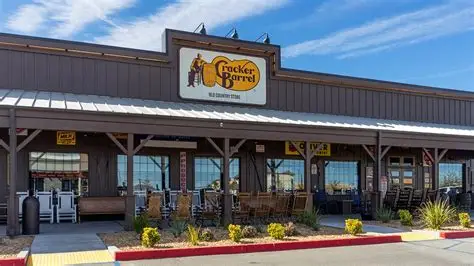We’ve all seen it happen. A brand we love suddenly shows up with a new look, and people lose their minds. Comments flood in saying “bring back the old logo!” or “this looks terrible!” But why think much about how a company’s logo looks? The answer goes deeper than you might think.
The Psychology Behind Brand Attachment
Our brains develop odd attachments to the logos we view regularly. It’s not just about buying stuff. These logos become part of how we see ourselves and our world.
Why Logos Become Part of Our Identity
Think about the brands you’ve loved since you were a kid.Maybe it’s the golden arcs of McDonald’s or the red writing of Coca-Cola These images get stuck in our heads when we’re young. They remind us of good times, family trips, or simple pleasures. When someone changes that logo, it feels like they’re messing with our memories.
We also use brands to show who we are.Your favorite coffee shop’s logo on your cup tells people something about your taste. When that logo changes, it can feel like losing a piece of yourself.
The Comfort of Familiar Visual Cues
Our brains love patterns and familiar things. When we see a logo we know, it makes us feel safe and comfortable. We don’t have to think about it. We just know what to expect.
This is why even small changes can feel jarring. Your brain was expecting one thing and got something else. It’s like walking into your childhood home and finding all the furniture moved around. Nothing’s really wrong, but it just feels off.
Nostalgia as a Powerful Marketing Force
Nostalgia sells. Companies know this. The old logo reminds people of “the good old days” when things were simpler or better. When a brand changes its look, customers worry that the quality or experience might change too.
This feeling hits hardest with comfort brands like restaurants or snack foods. People don’t want their comfort food to look different. They want it to remind them of happier times.

Famous Rebranding Disasters That Shocked Customers
Some companies learned the hard way that customers don’t always welcome change. Here are the biggest logo and branding disasters that made headlines.
New Coke: The Ultimate Brand Backfire
In 1985, Coca-Cola decided to change their famous recipe and called it “New Coke.” They thought they were giving customers something better. Instead, people went crazy. They hoarded old Coke cans and started protest groups.
Customers hated it so much that Coke went back to the old formula in just 79 days. They called it “Coca-Cola Classic.” The lesson? Some things are too sacred to mess with, even if you think you’re improving them.
Gap’s Logo Disaster: Six Days of Internet Fury
Gap unveiled a new logo in 2010. Instead of their classic white text on blue background, they switched to a modern black font with a small blue square. The internet exploded with hate.
People created fake logos making fun of the change. They started Facebook groups demanding the old logo back. Gap got so much negative attention that they scrapped the new logo after just six days.It now serves as a perfect lesson in failed rebranding.
Netflix’s Qwikster Split: When Change Goes Too Far
Netflix tried to split their DVD and streaming services in 2011. They wanted to call the DVD service “Qwikster” with its own logo and website. Customers would have needed separate accounts for each service.
People were furious about the extra hassle and higher costs. Netflix lost 800,000 customers in three months. They quickly dropped the Qwikster idea, but the damage was done. Stock prices fell and trust was broken.
The Social Media Amplification Effect
Before the internet, if people hated a logo change, they might complain to friends or write letters. Now, one unhappy customer can reach millions of people in minutes.
How Twitter Turns Logo Changes into Viral Controversies
Twitter is where logo controversies go to explode. Someone posts a picture of the new logo with a sarcastic comment. Others retweet it. Soon, everyone’s making jokes and sharing their outrage.
The speed is incredible. A logo can become a trending topic within hours. Companies that might have quietly weathered criticism in the past now face viral storms that reach news outlets and late-night TV shows.
The Speed of Modern Backlash vs. Pre-Internet Era
In the old days, customer feedback took time to reach companies. People had to call, write letters, or complain in person. Companies could gauge reaction slowly and make adjustments.
Now, backlash is instant and loud. A company can wake up to find their logo change trending worldwide with thousands of negative comments. There’s no time to ease into the change or explain their reasoning.
Customer Voice vs. Corporate Decision Making
Social media gives customers a powerful voice they never had before. Companies can’t ignore negative feedback like they used to. Bad reactions spread too fast and reach too many people.
But this also means companies sometimes make decisions based on the loudest voices online, not necessarily what’s best for business. The people complaining on Twitter might not represent all customers.
The Business Dilemma: Tradition vs. Modernization
Companies face a tough choice. Keep the old logo and risk looking outdated, or change it and anger loyal customers. There’s no perfect answer.
Attracting Younger Demographics Without Alienating Loyalists
Younger customers often prefer clean, modern designs. They might see old logos as boring or outdated. But older customers love the familiar look they grew up with.
Companies try to find a middle ground, but it’s hard to please everyone. Sometimes they create different versions for different markets or gradually introduce changes over time.
The True Cost of Rebranding Backlash
A failed logo change costs more than design fees. Companies can lose customers, see stock prices drop, and spend millions on crisis management. The negative publicity can hurt sales for months or years.
Some companies have to hire extra customer service staff just to handle complaints. Others spend huge amounts on advertising to explain the change and win back customers.
Market Research vs. Emotional Reality
Companies do lots of research before changing logos. They test designs with focus groups and survey customers. But research can’t always predict emotional reactions.
People might say they’re okay with change in a survey, but feel differently when they see it in real life. The emotional attachment to familiar brands is stronger than most research can measure.
Success Stories: Brands That Evolved Gracefully
Not every logo change ends in disaster. Some companies manage to update their look without losing customers. The key is knowing how to do it right.
Gradual Changes That Customers Embraced
The best logo changes happen slowly. Companies make small tweaks over time so customers barely notice. Pepsi has changed their logo many times, but each change was subtle.
Starbucks gradually simplified their logo over decades. They started with detailed text and imagery, then slowly removed elements until just the green mermaid remained. Each change felt natural, not shocking.
The Art of Subtle Visual Evolution
Smart companies know that evolution works better than revolution. They keep the parts of their logo that customers love most and update the parts that look dated.
McDonald’s updated their golden arches to look newer. Apple made their logo simpler but kept the apple shape. These changes looked fresh but people still knew the brands.
When Timing Makes All the Difference
Some companies succeed because they change at the right moment. When customers are already expecting change or when the old logo truly looks outdated, updates get better reception.
Companies also succeed when they give customers time to adjust. They might announce the change months in advance or use both logos for a while during the transition.
Lessons for Brands Considering a Visual Refresh
Smart companies learn from others’ mistakes. Here’s what successful rebrands have in common.
Reading the Room: Understanding Your Customer Base
Before making changes, companies need to know their customers. Are they young and like new things, or do they prefer old ways? Do they want to change or want things to stay the same?
The biggest mistakes happen when companies guess wrong about what their customers want. Gap assumed their customers wanted a modern look, but they actually preferred the classic design.
Testing Waters Before Making the Leap
Smart companies test changes carefully. They might try new logos in select markets first or ask loyal customers for honest feedback. They look for warning signs before making company-wide changes.
Some companies create multiple design options and let customers vote. Others hire outside experts to predict how changes might be received.
The Case for Keeping Some Things Sacred
Sometimes it’s better to keep things the same.. If customers love a logo and it still works well, why risk upsetting them? Some brands are too iconic to mess with.
Coca-Cola learned this lesson with New Coke. Their original logo and recipe were perfect as they were. Sometimes “if it ain’t broke, don’t fix it” is the smartest business advice.


